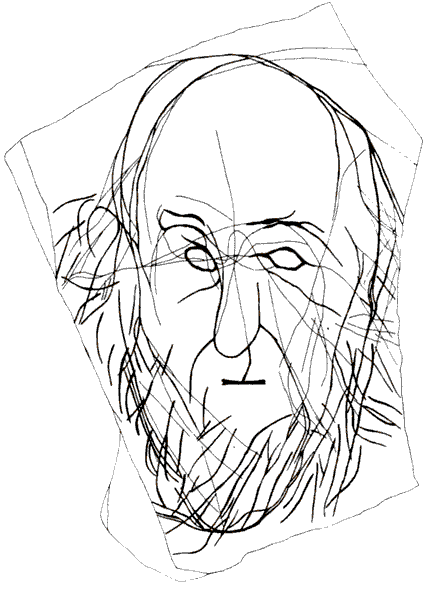3 ‘Modern’ Inventions That Existed Millions of Years Ago: Nuclear Reactor, Telescope, Clothes
/Some mainstream scientists may have people believe that humans evolved from lower life forms over the last 10,000 years or so, however, archaeologists have already discovered many artifacts of various ancient human civilizations that are millions of years old according to scientific carbon isotope dating. And guess what, these artifacts provide evidence that these ancient humans were even more advanced than we are today.
1. Nuclear Reactor 1.8 BILLION Years Old
The Oklo, Gabon Republic, nuclear reactor site. (NASA)
In 1972 at a uranium mine in the Gabon Republic of Africa, an open-air large-scale nuclear reactor with a highly sophisticated layout was discovered and calculated to have been built 1.8 BILLION years go and active for 500,000 years. A French manufacturer importing uranium ore from here found it had strangely already been used, so they send scientists to examine the site. They concluded the uranium here was more than twice as powerful as normal uranium and practically impossible to have naturally occurred.
"The reaction sites consists of several compact bodies of uranium ore with a very high uranium concentration. Altogether, over 500 tons of uranium took part in the reactions (perhaps even more, for fresh ore bodies have just been discovered). The energy released must have amounted to almost 1011 kWh. At some points the integrated neutron flux exceeded 1.5 X 1021 n/cm2 , and samples with a 235U concentration of as little as 0.29% (as compared with 0.72% in natural uranium of normal isotopic composition) have been found. For such values to be attained, there must have been extremely effective mechanisms for controlling the nuclear reactions, mechanisms which have not yet been fully elucidated. Even more remarkable is the state of preservation of these "fossilized nuclear reactors"; in fact the uranium has retained its configuration from the time of the reactions so faithfully that the reaction rate distributions through the ground can be interpreted in terms of neutron physics. This implies a quite exceptional conjunction of circumstances, and it is expected to be possible to reconstruct the progress of the phenomenon in some detail. Thanks to the innumerable "traceurs" resulting from the nuclear reactions, it is possible to study a whole episode in geological history extending from the deposition of these very heavy concentrations of uranium about 1,800 million years ago to quite recent modifications." -- The Oklo Phenomenon by Roger Naudet, 1975 International International Atomic Energy Agency Symposium
Dr. Glenn T. Seaborg was head of the United States Atomic Energy Commission and Nobel Prize winner for synthesizing heavy elements who believes this highly concentrated uranium site was not a natural phenomenon but in fact a man-made nuclear reactor. This reactor is more advanced than anything we can build today, being miles long yet remarkably only heating it's surroundings within 130 feet while containing all radioactive waste in the nearby earth. Reactor engineering specialists believe this Oklo site's uranium could not contain such high concentrations of U-235 for nuclear reactions to naturally occur. Plus, extremely pure water is required for uranium to "burn" in a reaction, which does not exist naturally anywhere in the world.
2. Stone Engraving of Telescope & Modern Clothing 65 MILLION Years Old
a 65 million year old stone engraving of a person holding a telescope, an invention believed to be created in 1609 by Galileo. (Courtesy of Eugenia Cabrera/Museo Cabrera)
In the National University of Peru, there is a 65 MILLION year old engraving on a rock with a person wearing modern clothes and observing the stars with a telescope. It's was previously believed that the European astronomer, Galileo Galilei invented the telescope in 1609 but this finding proves otherwise.
Ica stone showing ancient person riding triceratops dinosaur. Credit: Dennis Swift
There are 10,000 other stones in the Cabrera Museum in Ica, Peru showing more ancient humans with clothes, shoes, and headdresses. There are also medical scenes of blood transfusions, organ transplants, and cesarean sections — even riding dinosaurs!
Dr. Dennis Swift, author of "Secrets of the Ica Stones and Nazca Lines" and archaeologist from the University of New Mexico, recorded evidence that these stones are from Pre-Columbian times. He has been around the world and collected similar artifacts depicting the lives of ancient peoples proving than mankind is much older than many know.
3. Well Dressed Humans in 14,000 Year Old Cave Paintings
Cave painting from the cave of Altamira in the Anthropos Pavilion of The Moravian Museum in the Czech Republic. (Wikimedia Commons)
In 1937 Léon Péricard found 14,000 year old paintings in the La Marche caves of western France of people with tailored clothing, groomed beards, short hair, and riding horses. This proves that ancient humans were much more sophisticated than the infamous "caveman" concept with ragged animal skins and messy long hair.





In 2002, Dr. Michael Rappenglueck reevaluated Péricard’s findings and believes they are genuine and noted that many floor paintings and etchings, which may contain even more valuable relics, were damaged during the earlier excavations.
Rappenglueck also believes that this, and other such discoveries, are ignored or even kept hidden by modern science. For example, some pieces from La Marche cave are displayed in Paris' Museum of Man except for the best ones that show the sophisticated culture of these ancient people.
“For some years it has been left to broader media coverage (in the form of printed matter, audio-visual material, electronic media and planetarium programs) to raise awareness of proto-astronomy (as well as proto-mathematics and other proto-sciences) during Palaeolithic times.”
Thankfully, now we can share information so easily and quickly. In this information age, stubborn incorrect notions are being rectified by the newly revealed truths.
Sources
- http://www.theepochtimes.com/n3/345446-3-modern-inventions-that-existed-millions-of-years-ago-nuclear-reactor-telescope-clothes/
- https://en.wikipedia.org/wiki/La_Marche_(cave)
- www.DinosaursAndMan.com









